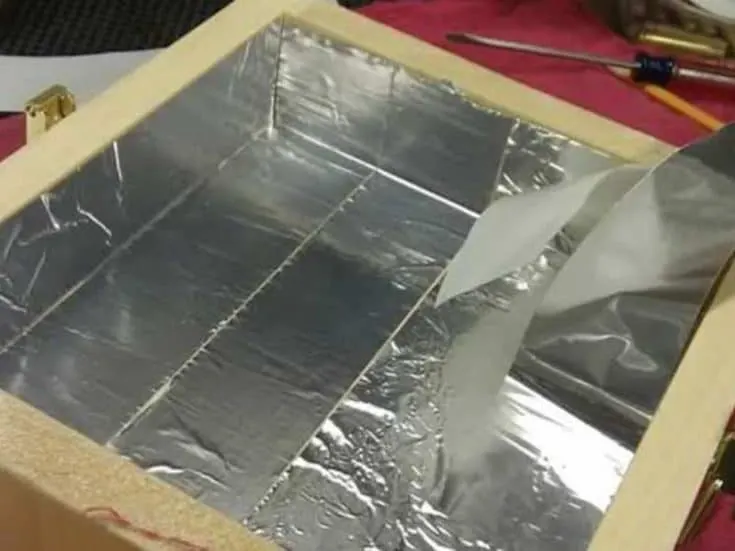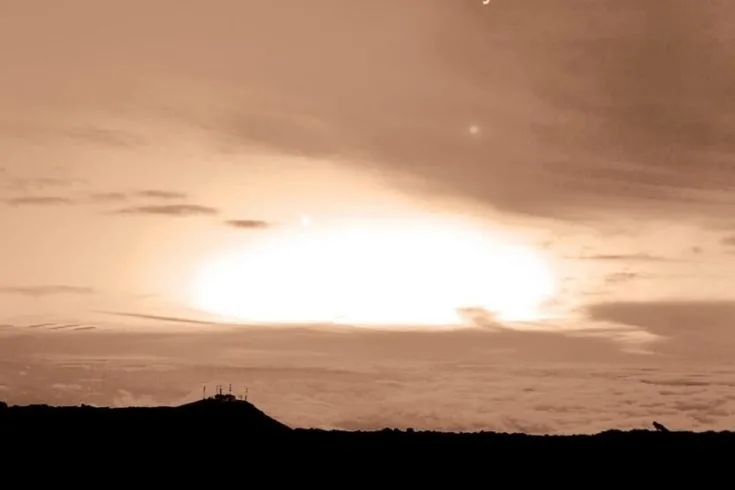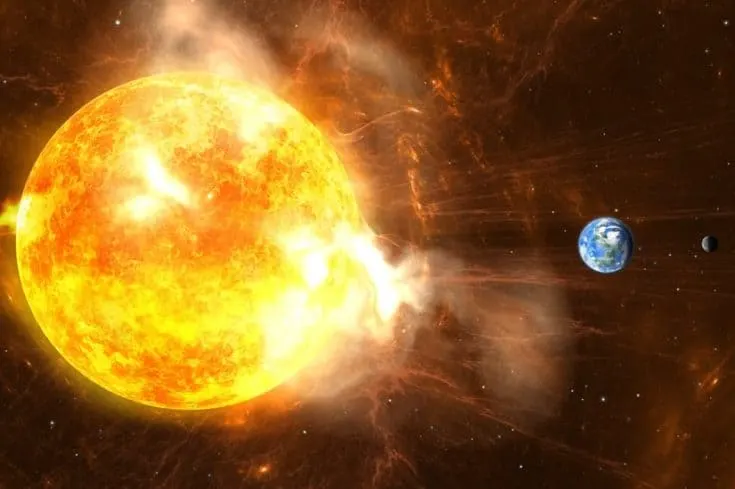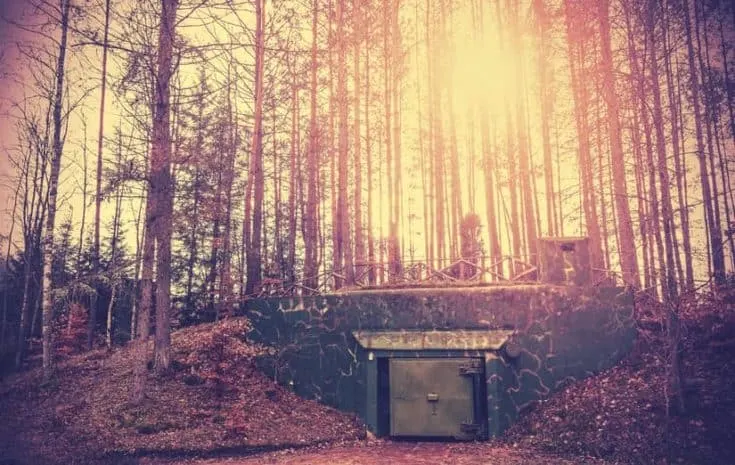SHTFDad may collect a share of sales or other compensation from the links on this page.
As I write, summer is stretching its wings here at my off-grid retreat. The trees are leafing out, the trout stream is flowing, and the birds are singing the praises of restarting the cycle of life.
The absence of electricity makes life here simple (save what the solar system provides). Likewise, no cell service is often a blessing. Of course, this is by choice and not from an EMP attack and survival.
I know that few people in America will ever find or even be able to appreciate this level of peace.
There is a solemnity of separation from the distractions of the modern world. However, deep down in my prepper’s heart, I feel that what I appreciate as peace may be thrust upon us through little choice of our own.
We may all be put in the position of having to do without modern conveniences when we are hit with an EMP attack. Let’s take a walk down this path before my daily duties call.
What is an ElectroMagnetic Pulse (EMP)?

An EMP is an influx of electric charge through the atmosphere that settles into conductive surfaces down here on earth.
Simply put it’s a power surge that destroys anything electronic that it passes through. It’s an electronic overload like nothing we have ever experienced. Powerful enough to blow up transformers and fry the electronics in every appliance in your home, the massive pulse or power surge is basically unstoppable.
There are several possible causes including the sun, in the form of a Coronal Mass Ejection (CME), a nuclear explosion in the upper atmosphere, or with more local effects, an electromagnetic pulse gun.
Therefore, I’ll mainly consider the first two as they have the potential to have the most devastating effects.
EMP Attack
The man-made variety of Nuclear EMP (NEMP) requires a nuclear weapon detonated in the upper atmosphere. The resulting explosion floods the upper atmosphere with gamma particles.
These particles collide with atmospheric atoms releasing electrons and adding charge to the atmosphere. As the gamma particles play ping-pong, they release more and more charged particles. These then go in search of a conductor to take them to the ground.
This was discovered during the Starfish Prime nuclear test where a high-altitude nuclear explosion caused EMP-related damage in Hawaii approximately 900 miles away. Results were similar to the Soviet Union’s Project K nuclear tests.
To pull off an EMP you need two components. A Nuke and a delivery vehicle. Neither need to be very sophisticated.
Low-grade nuclear weapons can be used to trigger an EMP. This has long been the concern of military officials regarding threats like North Korea and Iran. While their capabilities and technologies are limited, currently they could potentially execute something like this just off the US shore.
The delivery vehicle also does not need to be a long-range monster rocket. SCUD missiles – the most widely used\available rockets in the world – have the range to hit the optimal altitude for an EMP. In fact, both the US and Iran have tested SCUDS at high angles.
An EMP attack is a first-strike weapon that would significantly impact life in the United States. With a shore launched SCUD missile the warning would only be a few minutes. At least, that’s if any warning could be given at all.
Coronal Mass Ejection (CME)

A CME is similar, however, the source of the cascade of particles is a burst of energy from the sun. Most often associated with sunspots, this flow of energy can also come from a gap in the sun’s own atmosphere (Coronal Hole).
NASA has satellites in place monitoring the sun giving us a persistent view at our fingertips. The satellites will provide approximately a 5-minute warning for the first impact. However, the main wave of particles from the sun will arrive in 12 hours to 3 days.
In 1859 the defining solar storm was the Carrington Event. Consequently, this CME caused auroras as far south as Texas and damaged what little electrical infrastructure we had at the time.
It is estimated that a Carrington level event will hit the Earth every 150 years.
Most recently in July of 2012, an extremely large solar flare erupted from the sun (missing us due to solar rotation) by about nine days. We would have had 12-18 hours’ notice had this flare exploded 1 week earlier. As a result, it would have taken an estimated 5-10 years for us to recover.
EMP Effects

Regardless of the source, the overabundance of charge in the atmosphere eventually finds a home down here on Earth. Drawn to conductive materials, the charged particles collect on metallic surfaces big and small inducing a charge proportional to the size of the conductor.
Unfortunately in our life of modern conveniences, we have surrounded ourselves with items sensitive to extra charge.
Our cellphones, cars, radios, TVs, and computers are all filled with uncountable quantities of microcircuits that are designed to manage thousandths of a watt. Hence their exposure to charges from an EMP will quickly overwhelm and damage them.
Take your vehicle for instance. Complex electrical components at the status quo in modern cars. Shut even one or two vehicles down during your evening commute and traffic comes to a violent end. Even if it could restart, what good will it be in a hundred-car pileup?
Learn how to EMP proof your car, so you are one step ahead of your neighbors when SHTF.
EMP and the Electrical Grid
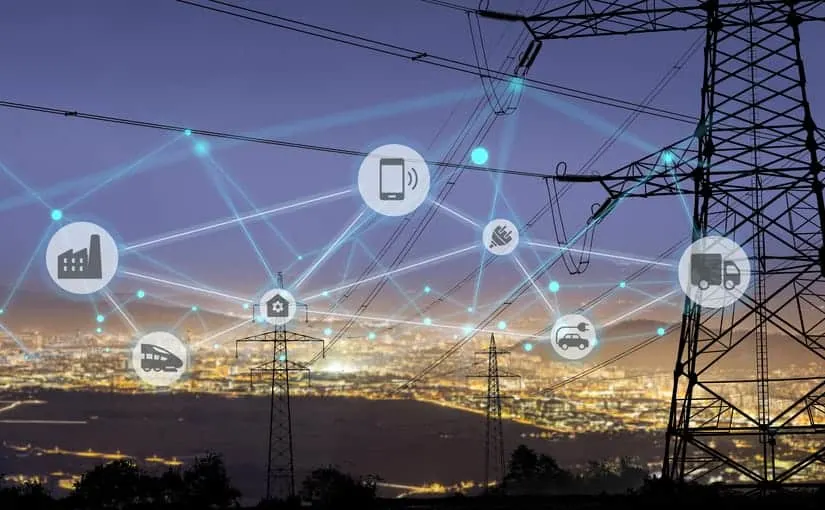
The real concern is our electrical grid. For example, crisscrossing the country is uncountable miles of wire shunting electricity from power generation plants to our homes. Each mile is an antenna ready to absorb an EMP and send it to your house to fry anything plugged in.
Likewise, the power lines may sag or break due to the extra charge. During the Carrington Event telegraph wires reportedly caught fire due to the induced charge.
But wait, there’s more. EMPs are an equal opportunity offender taking the power generation plants offline as well as the electrical grid’s complex network of power transformers. In short, the grid will go down hard and stay down.
EMP and SCADA

Next in line are the myriad of Supervisory Control and Data Acquisition (SCADA) systems that keep this country going.
From manufacturing to agriculture, we have become dependent on the ability to remotely watch, measure, and control our lives. Indeed, this is the job of SCADA systems.
The fuel fed to a power plant, water through a dam, and the critical mix of chemicals in a manufacturing plant all utilize control systems that are vulnerable to an EMP. Imagine if all of that were to shut down.
Without control over these systems, some will simply shut down and not restart (the best possible outcome). In the worst case, the systems will spiral out of control to a violent and explosive end.
This is the outcome of an EMP attack.
How Bad Could It Be?
Let’s look at the aftermath of an EMP attack.
The First Second of an EMP Attack

In the first second of the EMP attack the cascade of electrons race to earth congregating on any conductive surface.
In long electrical transmission wires, this results in an overwhelming charge passing through the wires at near the speed of light into houses, businesses, schools, government centers, and manufacturing facilities.
The EMP attack immediately disrupts and destroys any connection large or small. Surge protectors are to slow to combat the ultra-fast charge spike. Furthermore, the surge equally compromises sensitive components in disconnected devices.
Power generation plants go into immediate shutdown as components fail. Critical functions in transformers stop and overheat. The United States no longer produces power.
Nuclear power plants lose the critical infrastructure that controls their rates of chain reaction. Vital heat exchange systems stop working and the nuclear plant can no longer keep the containment water from boiling off.
SCADA systems from horizon to horizon instantly fail, locking their components in their current position. As a result, plant managers lose their ability for rapid response and control. Very, very few fail to a safe position.
On the highway cars, trucks, buses, and tractor-trailers lose power and roll to a stop.
All communications systems: television, radio, telephone, cellular, and (OMG!) the internet go silent. Bye-bye shtfdad.com and all its wisdom, you’re on your own (with the exception of those clever enough to print out all important articles for their emergency binder)!
People around the United States take notice as the power has just gone out.
The First Minute after an EMP Attack
One minute into the EMP attack power is universally off and the US is largely silent. This is the deep breath before the storm. People begin to take notice.
For those in offices, it’s interesting that the UPS backup systems aren’t beeping. Elsewhere all the lights are out, and it is strange that the backup lights aren’t on – even those that are always on over the emergency exits. The universal thought is “Oh well, I’ll pass the time with my cellpho…”. Oh.
Additionally, thousands of feet above the earth, over 3600 planes are in trouble. Pilots begin the procedures to activate their now non-existent redundant control systems.
They call on their now-defunct radios for air traffic controllers that are no longer there. Passengers lose lights, and entertainment systems and notice that the descent into the airport is happening too early.
In hospitals across the country, ICUs go silent. Doctors and nursing staff struggle for composure and control in pitch-black operating rooms.
Controllers at chemical plants notice all electronic controls have gone black. The critical manual backup gauges report pressure and temperature values outside of the norm. The staff just aren’t looking at them yet, because “We’ve never had to.”
On the highways, there are stalls, fender benders, and crashes. Those with good reactions have moved quickly to the side of the road. Those without have crashed and have now irrevocably blocked the roads. Tempers flare, and children cry.
The first minute ends with a few… truly the minority… checking their phones, and the few electronics around them “just in case.” It’s a habit, and this time the results are different. Very different.
Three Minutes
Three minutes into the EMP attack in homes across the country not much has changed. Light switches are tried repeatedly. The occasional TV or computer is smacked.
Teens yell out to mom or dad about their cell phone battery that just went dead. For those who check their phones, both landlines and cell phones are dead.
Aside from the occasional scuffle between road-ragers, the roads are at a complete standstill.
Meanwhile, back in offices, it’s no different from the myriad of other power outages. Cubes go quiet and employees head to IT departments and facility managers to get the scoop on when they can get back to their deadline and their TPS reports.
In bus stations, train stations, and airports, travelers head to customer support desks to check the status of their planes. While miles above, the very same planes start a terminal spiral to the ground.
Without the ability to control their critical dance, chemical manufacturing plants show overt signs of critical escalation, while in hospitals patients in trauma surgery and other sensitive operations begin to die.
Ten Minutes
It has now been ten minutes since the EMP attack and the signs are there for those who take notice. This is not your regular outage.
Preppers have now checked multiple systems and have started to execute their plans to improve their current position. That may be making an excuse to leave work, pulling out their bug-out bag, and walking home.
For the most fortunate who are at home, beginning preparations for the big bug out. They know what’s coming. They are praying that they are wrong. But they know it’s going to get worse.
For those in the cube farms and homes across the US, this is still just another outage.
Things get critical in operating rooms. If any emergency light can be found that is usable, patients are stabilized so that they can eventually be moved out of the operating theater. For those that are unlucky enough to be in the middle of transplants, brain surgery, cardiac procedures, or any one of a thousand routine operations there will be no stabilization.
In shopping centers, things start getting tense as electronic payment systems go down including EBT benefits. Raised voices and flared tempers occur, but there are no fights yet.
Tensions rise in chemical and nuclear plants. Processes are not shutting down properly and from what can be seen (and that’s not much) things are getting critical. Experts are consulted, opinions differ, manuals are consulted, and nothing is done.
So far, aside from the power loss, there are no overt signs of trouble – at least until the planes start to drop out of the skies. For those in the airplanes, they have run out of time. Pilots can do nothing with the fly-by-wire airplanes of today except pray. And pray they will in their final moments.
One Hour after an EMP Attack
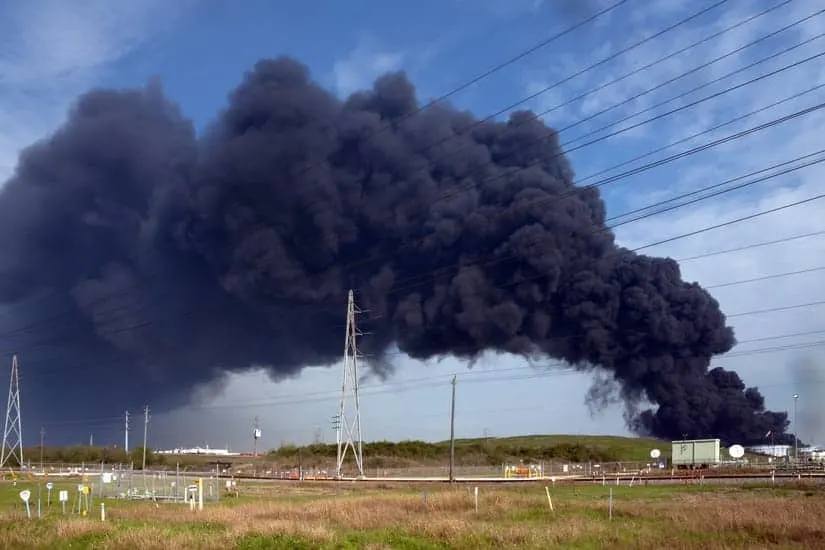
An hour past the EMP attack and the real eye-opener is the lack of news. For the vast majority of Americans, there has been no news. The Internet is down, cell phones are down. There is no TV or radio.
That is a little disconcerting and the sheep are leaving their homes to talk to each other. There may be one or two reasonable voices in the mix, but they go largely unheard.
For the few inside air travel corridors where planes have crashed, the situation is far from normal. Unfortunately, with no way of spreading the word the situation goes unreported and the crisis stays local.
The hospital’s efforts turn to triage. With no power, the only hope is to distribute what little help that is available to those that can survive the situation.
The first explosions happen at chemical plants. Without communications, neighboring communities have no way of knowing a toxic cloud is heading their way.
There are no planes in the sky, and it is eerily quiet.
Twelve Hours
A half a day since the EMP attack and life is tense. Refugees from the roads have walked to the nearest exit or the nearest convenience store.
In some cases, they will flock to the only house that can be seen from the road. Dozens of people congregate on the doorstep of otherwise remote property. In the worst cases, they are tired, injured, and demanding assistance in the form of information, food, water, and lodging.
Some on the roads never complete the trip. Not being used to taking more than a short leisurely stroll their heart wasn’t up to off-roading it across the median and up the first hill. Their hope and then their hearts gave out. Others simply succumbed in their vehicles due to heat, frailty, and no air conditioning.
The hospital’s morgues are full, and the staff is starting to wear thin. The next shift never showed up, and some on duty checked out citing family that they had to get back to. Short-staffed and missing the technology they have become accustomed to; they start to lose their grip.
Law enforcement is spread thin or non-existent in cities. The criminal element starts to take notice while the most entitled EBT holders await the straw that breaks the camel’s back. It comes at sundown.
Nuclear facilities that depend upon power to shut down start to fail. The staff recognize this and attempt to leave. Remember Fukushima? They had an ocean to cool the reactors. Most power plants don’t and for this, we will suffer.
24 Hours
It has been a day since the first signs of the EMP and in rural and suburban America things are largely the same. Most households have not missed a meal. Several have grilled the steaks from the warming fridge and ate the ice cream in the rapidly warming freezer.
In the cities, the undercurrent of violence is spreading. Rumors of sporadic pockets of crime present themselves. However, without mass communication or the internet to fuel the fire (or in some circumstances coordinate the fires) these pockets remain isolated.
The migration to health centers is well underway. They arrive with family members that are too far gone. They arrive with those that have no right being in this situation as their injuries are minor.
The ones that can truly be helped get lost in the shuffle. First arguments, then scuffles, and finally brawls close the hospitals off to those that they could save.
Three Days after an EMP Attack

The saying goes that we are “nine meals from chaos“. For some those nine meals just passed. With their bellies empty they become desperate. Stores were mobbed yesterday, and the looting is now widespread.
The pharmacies were the first to fall as desperate patients sought both lifesaving medicines as well as dependent medications. In a final entitled act of “If I can’t have it then no one can” inner cities were set ablaze.
One Week
It has been only seven days since the first EMP signs. A few communities have coalesced into mutual assistance groups, but even then, there is still dissension.
Strong personalities that didn’t get along in the best of times clash, while others are still mired in normalcy bias. They sit and wait for FEMA, or the fire department, or the Red Cross.
In towns near the highways where improvised shelters were set up, food, medical supplies, and other comforts have been depleted. The shelter residents have been desperate for days. Consequently, with no support and no news, some start the migration home.
Cities burn. There are a few pockets of hope. Some buildings or neighborhoods secured themselves early. Mostly these are communities strengthened by culture. Similar to the Korean business owners during the LA riots, they keep to themselves and hold all others back with the threat of organized response.
Hospitals are no longer places of hope. This also includes specialized care facilities. The staff is stretched too thin and has too few supplies to meet the demand. Used to daily inventory replenishment they just don’t have enough to last the duration.
Manufacturing and business centers are empty. Whether this is due to the dearth of business or chemical explosions, they are ghost towns.
One Month
After thirty days with no power, the die-offs have escalated.
First, it was those in critical care and those that could not withstand even a few miles on foot. Next were those caught up in initial skirmishes, then full-on riots. Additionally, industrial accidents claimed many lives.
Soon it was access to water. Water only moves with gravity when the power is out. After the first few days, the water towers ran dry and the poor souls were required to so without or find less-than-ideal sources.
Thirst is a powerful motivator, and many drinks from contaminated sources. The ensuing disease and illness claimed many lives.
Medical dependence took its own toll as required drugs ran out. The same occurred with illicit drug dependence. First the cravings then the reckless actions as they seek their fix.
The path was similar for those on psychological medications. Shortly after their supply ran out their previously managed conditions manifest themselves. Many failed to adjust to both the stress of the post-EMP world as well as their conditions.
It is within the first month that the disease takes hold. Unsanitary conditions kill many. Bad water, bad food, and improper disposal of waste bring rise to diseases long thought conquered. Typhoid, Cholera, and Dysentery kill by the thousands.
Even those who care for their own were still affected by their neighbors’ poor actions and decisions. In the largest shelters and cities, diseases run rampant and unchecked.
Three Months

Those without stored food or access to food have all died.
Those who have been injured and allowed an infection to set in have died.
Those without maintenance medicines have died.
Those alone or in weak groups that have been overcome by the strong have died.
Six Months

The seasons have changed in full now. It is cold and even in rural communities’ scant resources have become even more scarce.
With the plummeting temperatures, every person’s calorie needs to increase, so the subsistence meals they could scrape together before are now slowly killing them through starvation.
The few crops that were planted have been harvested and are being rationed. In the food producing heartland of the country, things have gone better where the stockpiles have been protected and the livestock tended and guarded.
In the most rural areas, all game is gone. Most have turned to forage in the forests. Some have prevailed if they had the skills. Others have succumbed to their mistakes.
Modern society has all but ceased to be. The cities are empty but for the few that cower in the shadows or those that prey on them.
One Year After an EMP Attack

By most estimates one year after an electromagnetic pulse attack 90% of the population of the United States has died.
Be Prepared for an EMP Attack
Our preppers from day one have long since identified the reality of the situation and have enacted their plans. They know that the best chance for EMP attack survival lies in several areas:
EMP Protection: Faraday Cage

A Faraday Cage is a shield against an EMP. A simple enclosure of conductive material (metal) allows the EMP to pass around anything stored within the cage.
Our preppers know to store sensitive electronics in their cage for EMP protection. For example SHTF communication equipment, spare batteries and chargers, computers, and electronic tablets with vast libraries of information. Some, with the means, store spare night vision or thermal vision equipment.
What Will Work after an EMP Attack?
They are educated about what electronics will work and have planned accordingly. The simplest of electronics will continue to operate.
Simple motors, small appliances, older electronics (think tube radios) and solar panels will all survive. Vehicles, tractors, etc. with carburetors and not fuel injector systems (pre-1980s) will survive.
Prepper families have tried to purchase backups of critical systems with EMP-proof components. This has even included bug-out vehicles.
Planning for the Long Term

An EMP attack is a life-altering event. The first second has sent the United States back to the 1800s. There are no electronics and it can no longer feed and sustain its population.
Living with this new normal requires planning for the long term.
The first goal is relocation to a retreat that is far from a population center (more than two tanks of gas from a major city) and not easily found (e.g. a back road off a back road that is off a back road).
The secondary goal is the storage of enough supplies, and the requisite skills, to avoid all human contact for six months.
The final goal is the ability to be self-sufficient for the long term. This includes farming, animal husbandry, hunting, medical training, etc. Even the right place to scavenge after SHTF. After the first year, they are truly on their own.
But before we jump ahead of ourselves, the preppers have executed their relocation plan. They recognized the situation for what it was early, and acted quickly, deliberately, and according to their plan.
They used their pre-1980s bug-out vehicle to take back roads to their remote retreat. There they opened their Faraday bag and removed a full complement of communications gear to get EMP attack news and hooked up with their support group. Then they hunkered down for the long wait.
Frequently Asked Questions
Who could possibly pull of an EMP attack on the United States?
Many of our foes including Russia, China, and North Korea have the ability to launch a successful EMP attack on the US.
How long will it take people to notice that we have been attacked?
Life will change instantly, however, most will not notice for hours or even days. It is possible that those not familiar with EMPs could be in a state of normalcy bias refusing the dire circumstance for many days believing that Government would come and save them any day now.
What will the first 24 hours look like after an attack?
Within 24 hours transportation will have stopped (including all airborne planes will have crashed), all people in critical care will have died, and some thrust into harsh circumstances (e.g. pushing a car or walking long distances) will have died due to the increased stress.
What would the US look like 1 year after an EMP attack?
90% of the population of the US would be dead within 1 year. Experts agree that due to our dependence on technology we would not survive very long without it.
Conclusion
Well, that was sobering. While EMP attack probability is actually pretty low it still is enough of a possibility to include in our preparations.
Definitely not ahead of our six-month financial cushion or a three-day bag in case we need to leave the house in a rush.
An electromagnetic pulse blackout is a threat that can come from the sun or from a dictator with a death wish. Who knows which national enemy will pull the trigger on an EMP? Lord knows there are several that are capable and have expressed the intent.
Scientists have put the probability of a large CME hitting Earth at 12% per decade. It has happened before, and it will happen again. That is a certainty.
Learn to recognize the signs and take the time we have now to formulate a plan that gets you safely to a protected and well-stocked retreat.
Until then, my coffee is empty, and the pooch is making signs that she wants to be fed. It’s time to get to the chores. Tomorrow’s water needs to go into the Berkey, and I need to refill the woodshed after the winter’s withdrawals.

What’s the Closest Nuclear Bunker to Your Home?
Do you have a plan if an EMP hits nationwide and SHTF? There are a lot of natural nuclear shelters in the US that are absolutely free.
And one of them is near your home. Click on the link below and find out:
What’s the Closest Natural Nuclear Bunker to Your Home?
Click on the image above to find out where you need to take shelter.
Resources:
- Wikipedia
- Futurescience.com
- SpaceWeather.com
- Livescience.com
- FirstempCommission.org
- Science.nasa.gov




